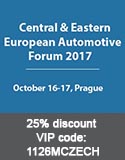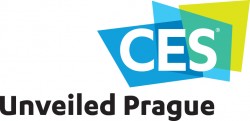Low-Carbon Technologies – Call I
The 1st Call for proposals of Low – Carbon Technologies programme was announced on 7 March 2016. Applications are submitted via the IS KP14+ internet application. Applications are received from 1 April 2016 until 31 July 2016.
Basic characteristics:
Who can apply (aid recipients)
- The applicant, beneficiary is a business entity; a small or medium-sized enterprise as defined in Annex I to Commission Regulation No 651/2014 or Commission Recommendation 2003/361/EC, a large enterprise.
How much can be obtained for each project (form and amount of aid)
Aid amount:
For activity a) Electromobility:
- Acquisition of electric vehicles – the minimum subsidy amount is CZK 70 thousand and the maximum amount is CZK 3 million.
- Acquisition of charging (non-public) stations for electric vehicles within the business premises for own use – the minimum subsidy amount is CZK 50 thousand, the subsidy is provided up to a maximum amount that is in accordance with the rules for de minimis public aid.
For activities b) Energy storage:
- The minimum subsidy amount is CZK 50 thousand, the subsidy is provided up to a maximum amount that is in accordance with the rules for de minimis public aid.
For activity c) Secondary raw materials:
- The minimum subsidy amount is CZK 1 million, the subsidy is provided up to a maximum amount of CZK 100 million.
Aid intensity:
For activity a) Electromobility:
- If the beneficiary is a small enterprise, aid is granted up to 70% of EE.
- If the beneficiary is a medium-sized enterprise, aid is granted up to 60% of EE.
- If the beneficiary is a large enterprise, aid is granted up to 50% of EE.
For activities b) Energy storage:
- If the beneficiary is a small enterprise, aid is granted up to 60% of EE.
- If the beneficiary is a medium-sized enterprise, aid is granted up to 50% of EE.
- If the beneficiary is a large enterprise, aid is granted up to 40% of EE.
For activity c) Secondary raw materials:
- If the beneficiary is a small enterprise, aid is granted up to 45% of EE.
- If the beneficiary is a medium-sized enterprise, aid is granted up to 35% of EE.
- If the beneficiary is a large enterprise, aid is granted up to 25% of EE.
For what aid can be obtained (supported activities)
- Electromobility (introducing innovative low-carbon technologies in low-carbon transport, the electromobility of road vehicles):
Acquisition of electric vehicles.
Acquisition of charging (non-public) stations for electric vehicles within the business premises for own use.
- Energy storage:
Pilot projects for introducing energy storage technologies.
- Secondary raw materials:
Introduction of technologies for secondary raw material recovery in a quality that is suitable for further use in industrial production, such as from used paper, glass, metals, tires, textiles, plastics, construction and demolition waste, energy by-products and a number of other products at the end of their life.
Introduction of technologies to efficiently recover valuable secondary raw materials – which are lacking in both the Czech Republic and the EU (especially critical raw materials) – from used products.
Introduction of innovative technologies for the production of innovative products from secondary raw materials, including the replacement of primary resources with secondary raw materials, where economically feasible.
Which costs can be supported (eligible costs)
- Fixed tangible assets. When acquiring construction works, the aid provider will only consider eligible expenditure to include investment costs up to the amount of the construction work prices indicated in the ÚRS/RTS/etc. lists for the year in which the aid application was submitted. In this context, the applicant is obliged to submit – along with the aid application – a detailed itemised budget with prices for the construction works that are planned to be implemented within the project. If the price for the construction works is higher than the price indicated in the construction work pricing guidelines (ÚRS/RTS/etc.), such expenditures will be reduced to an amount corresponding to the guidelines.
- Fixed intangible assets (if required for the proper operation of fixed tangible assets).
- Feasibility studies.
Attached files
| Description | Type | Size | Date |
|---|---|---|---|
Low-Carbon Technologies – Call I - resume |
291.9 kB | 30 Mar. 2016 |








